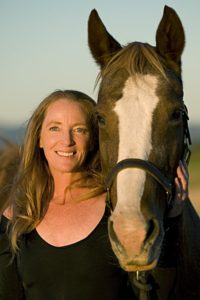
Adopting the right mindset around aging and maintaining your health is important when it comes to making meaningful personal changes that lead to lasting benefits. But for the majority of people, doing this doesn’t come naturally.
According to Kay Van Norman, an expert in health and vitality and the founder of Brilliant Aging, receiving help in the form of regular support to change our perspectives on our health is essential. Max Cynader, the founder of Synaptitude, sat down with Kay (virtually, of course) to discuss how Brilliant Aging and Synaptitude are both helping people to adopt healthier behaviours and embrace healthy brain aging through mindset changes.
In Kay’s view, adopting healthy behaviours begins with a mindset change. She calls this mindset “ageless thinking,” and she sees it as the foundation for lifelong vitality. Understanding Kay’s concept of ageless thinking is invaluable for anyone who is interested in improving their health. At Synaptitude, we’ve made similar principles to Kay’s ageless thinking a core part of our product. We believe that assisting users with micro-behavioural changes will lead to an overall mindset shift and ultimately a net benefit to any individual’s bra in health. That’s why we’re so interested in connecting with people like Kay. She uses a personal story of one of her friend’s experiences to illustrate the ideal example of how someone’s ageless thinking can have a profound impact on their long-term health.
in health. That’s why we’re so interested in connecting with people like Kay. She uses a personal story of one of her friend’s experiences to illustrate the ideal example of how someone’s ageless thinking can have a profound impact on their long-term health.
If you are looking for a baseline of your overall brain health, then try the free Synaptitude lifestyle assessment.
Answer some simple questions and see where you rank, and where to focus across these five health indicators: exercise, sleep, nutrition, stress and cognition.
Ageless Thinking through Horse Riding in Montana
Kay is from Montana, and so—naturally!—she rides horses and has riding friends who farm too. A friend of hers went through a terrible farming injury—a broken neck—and quickly overcame it to keep on riding. As Kay recounts
At eighty-two, a friend of mine that I horseback rode with for years fell off the top of a haystack and broke his back and his neck. Everybody was devastated, thinking he was completely done. When I went to see him in the hospital, the first thing he said was, “I can’t believe I messed up my whole !@#@% summer of riding.” He never one time believed he was done. Everything he did was about the fullest recovery so he could get back to riding. And it was fascinating watching him use all of the different building blocks of resilience that I’ve learned from research and experienced in my work with clients on ageless thinking.
Basically, he took charge of his wellbeing. That’s what differentiates people who embrace and take charge of their long-term health. He didn’t hand it over to anybody else. He said, “I’m going to do this.” Seven weeks to the day after he broke his back, he was on horseback again. We’d ride together for the next seven years. At age eighty-nine, he decided that was his last year riding because he was getting really fatigued at the end of the rides. How different would his life have been if he had just said, “Oh, I’m eighty-two. I broke my back, I can’t do anything now”?
The story of Kay’s friend embodies the concept of ageless thinking, a mindset that doesn’t always come naturally to most of us. To help people to adopt this mindset, Kay uses what she calls a “Vitality Portfolio®,” because, as she sees things, “The biggest challenge seems to be building behavioural change and helping folks stick to the plan by making it easy and realistic to follow.” Kay’s Vitality Portfolio® is built using a familiar concept, a financial portfolio. Kay says that
Most people know that if you’re going to have good financial wellbeing throughout your life, you have to make a financial plan, balance assets, and make regular deposits. What I do with the Vitality Portfolio® is encourage people to take a similar view of their health. You need to make a a long-term healthcare plan, but you also need to actually plan for your lifelong vitality. Then you need to balance vitality assets I’ve identified as: functional (strength, mobility, endurance), core (resilience, ageless thinking), and Whole-Person Wellness (body, mind, spirit). From there, you have to plan out long-term deposits into your portfolio. I’m not talking about marathons. I’m talking about daily behaviours to support vitality that compound over time like a financial portfolio.
Synaptitude can relate to Kay’s approach to planning ahead specifically for brain health. Using Synaptitude’s lifestyle assessment, you can gauge your baseline brain health indicators and identify the areas in your life where you can focus on making incremental improvements to your overall health. Once you have a baseline, Synaptitude helps you to adopt improved habits and monitor your progress.
If you are interested in learning more about Kay’s work and setting up a Vitality Portfolio®, then check out her site here: https://www.kayvannorman.com/
If you would like to learn more about Synaptitude and get a baseline of your brain health, try out our app today: http://app.synaptitudebrainhealth.com/
